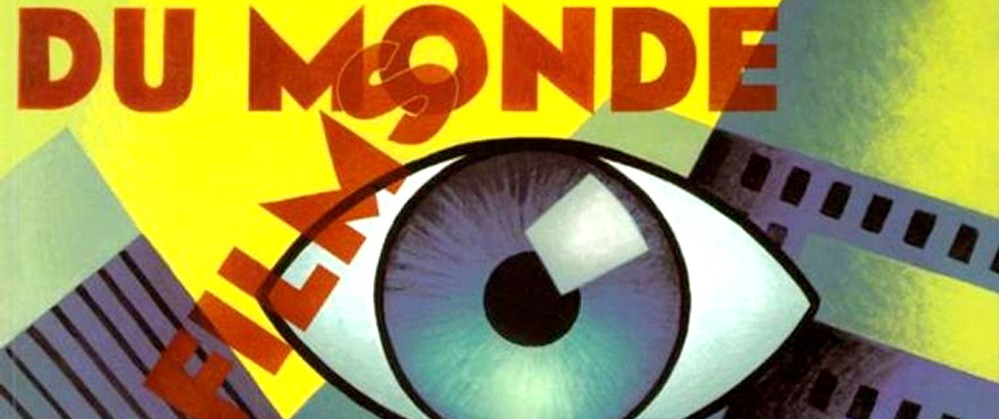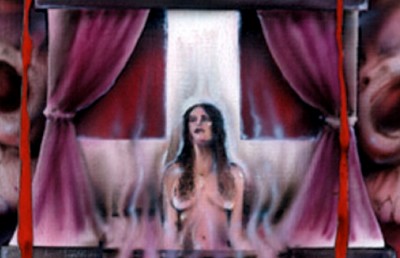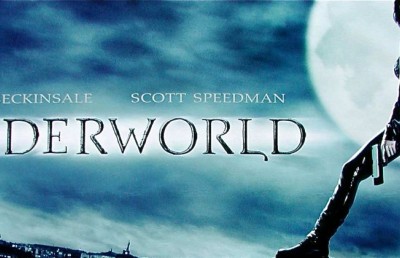The 27th World Film Festival: The Cinema of Asia

Over the last twenty years, the continent of Asia has produced some of the most significant feature films in the world, and has been home to most of the important new film movements: the 5th Generation in the People’s Republic of China (emerging in 1985), the Taiwanese New Cinema (1983), the Hong Kong and South Korean New Waves and the remarkable post-revolutionary cinema in Iran. As usual, this year, the Festival des Films du Monde (FFM) provided us with a good selection of Asian films from seventeen different countries.* Also, as if often the case, some of the most highly anticipated titles from directors such as the Japanese Naomi Kawase, Kiyoshi Kurosawa and Takeshi Kitano, Tsai Ming-Liang (Taiwan), Jafar Panahi (Iran), and Im Sang-Soo (South Korea) are receiving their North American premieres at the Toronto Festival, but, hopefully they will all be distributed in Quebec, or, at the very least be shown in the Festival of New Cinemas and New Medias here in October. In any event, the FFM showcased number of prominent new Asian films, including five in the official competition. Of these, the Sri Lankan entry, Ira Madiyama (Soleil d’Août, directed by Prasanna Vithanage), with its intricate cross-cutting of three journeys—by a Tamil guerilla on his way home, an educated Sinhalese woman looking for her downed-pilot boyfriend, and a family of Muslim refugees—should have won a prize, a sequel to Satyajit Ray’s celebrated Days and Nights in the Forest (1970) by Goutam Ghose, Aabar Arannye (In the Forest… Again), from India, contained some beautiful Bengali moments, while Karsilasma (La rencontre) by veteran Turkish art filmmaker Ömer Kavur was highly regarded by Montreal critics, and was expected to win a prize. It didn’t. For myself, I was sure that Ruoma De Shi Sui (Quand Ruoma avait dix-sept ans) by first-time Chinese filmmaker Zhang Jiarui and starring a first-time Hani minority actress, Li Min, would win something, either for her performance or for the stunning terraced rice paddy landscapes of Yunnan province. But, it was not to be. Perhaps the jury, which was dominated by old (but not “stupid”) white men, cast their votes unconsciously in a Eurocentric manner…
Of the many films from Iran on view at the FFM—a perennially prominent force—I am singling out Parviz Shahbazi’s Nafas-e Amigh (Deep Breath) for special attention. Surprisingly, given the tough restrictions on the subject matter of Iranian films, this director has been able to specialize in stories of mis-spent youth through his first two features, Travellers from the South (1996) and Whisper (2000) and now, in his third, and best. Kamran, who has dropped out of Engineering school and his less-wealthy friend, Mansour hang-out together, behaving like punks. Riding on the back of Mansour’s motorcycle, the long-haired Kamran sticks out his right leg and kicks the rearview mirrors off a line of cars. Never entering the gates of his family mansion, he scratches up a car, parked outside, bought for him by his parents. The two steal a car from a frightened woman, and somehow manage to avoid being arrested by police, who continually stop them on suspicion of other offenses. They spend their nights in a Tehran hostel and befriend and drink tea with Ashram, whose identical twin brother boards with him. While Kamran contracts a mysterious, fatal illness, Mansour pursues a female university student, Ayda, with whom he has fallen in love. Remarkably, the film is structured around a drowning incident. The film begins with the camera mounted on the bow of a boat, travelling across water in a reservoir, surrounded by beige rocks and cliffs. The off-screen voices of rescuers talk of a submerged car, and two occupants, wondering if the long-haired person they are retrieving is a man or a woman, and, as we view a slow-motion, underwater shot of swirling, jet black hair, an abrupt cut reveals Kamran emerging from the water of a swimming pool. The film unravels as a flashback. We are led to believe, firstly, that the car accident victims will be the two punks, when they drive towards the reservoir to meet Ayda on a field trip, and secondly that the victims will be the two young lovers, escaping Tehran after Kamran’s funeral. But, at the end of the film, they drive past the accident scene, and the narrative cycle is complete. If we, at the end of this tense road movie, breathe a sigh of relief, as Mansour and Ayda, no longer visible in their stolen car, drive upwards into a dense fog, we must wonder if any kind of future together awaits them…
The last addition to the Cinema of Asia section was one of the very best films at the FFM: Randa Chahal Sabbaq’s Le cerf-volant, a Lebanese/France co-production. Listed in the catalogue at 120 minutes, it only lasted 80, and the denouement was so swift, it felt like a couple of reels might have been missing. Shown on the last weekend, when it also won the Jury Grand Prix (2nd prize) at Venice, Le cerf-volant contained an interesting mixture of satirical comedy and seriousness in its condemnation of intensely guarded political divisions. For this film, which is set on the southern border of
Overall, the Chinese selections were much better than last year’s. The least interesting of the three PRC films in the Cinema of Asia section is the very conventional, but handsomely styled The Story of Lotus, directed by Qi Jian. More interesting is the socially-engaged work of realism, Ka La Shi Tiao Gou (Cala, My Dog!), which looks back on a 1995 law demanding that Beijing dog owners pay an exorbitant license fee. Beginning with a hand-held, verité-styled chase sequence where a wife and mother is caught with her unlicensed dog, Cala, and ending in stillness as the family’s pet is finally driven away, Lu Xuechang’s film, which had screened in the International Forum at this year’s Berlin film festival, documents the humanizing of the, apparently non-dog-loving member of the family, the nightshift-working father, Lao Er (played charmingly by Gou Ye) over the 18 hours they have to procure a license. The most interesting of the three films, Pretty Big Feet is somewhat of an enigma. Filmed by the once-great Xi’an studio, it recaptures the stark landscape beauty seen in films such as In the Wild Mountains (1985) and Red Sorghum (1987) with its dry yellow river bed locations, and features striking individual shots which transmit great emotional power, e.g., where the central female character, Zhang Meili (who is “pretty” but has “big feet”) drags a long rope to raise a bucket of water from a very deep well, the camera tracks back with her movement, and the wide-angle lens emphasizes the struggle, and exaggerates the distance travelled. The tone is very broad and at times melodramatic, but most strangely the music often reaches a crescendo unmatched by the emotion displayed in the film’s action. And, fast fade-outs often terminate scenes prematurely. I am persuaded to think that the film’s director, Yang Yazhou was trying to find a new, perhaps more authentically Chinese, rhythmic approach to telling stories and reaching out emotionally to the audience, but, I can’t be sure of this. Pretty Big Feet was a very successful film with Chinese audiences, though.
The Zénith d’Or, voted on by the public as the Best Film in the Cinema of Asia section was given to Watashi No Gurampa (My Grandpa) directed by Yoichi Higashi (Japan). This was certainly a worthy winner, recounting a growing relationship between Godai Tomako, a high school girl just turning 14 and her 68 year-old grandfather, whom she affectionately refers to using the English term “Grandpa,” and who, she gradually learns, is being released from prison after serving a 13 year sentence for killing a Yakuza boss. There is little of cinematic interest in this film, and I would have cast my vote for something more adventurous, such as Le cerf-volant, or Deep Breath, or films from three countries rarely represented in the FFM: Malaysia, Singapore and Armenia. Yau Fang Chu Zu (Room to Let) is a “digital film” and was shown at the festival on video. Clearly influenced by the Taiwanese work of Malaysian-born director Tsai Ming-liang, with its long take, interior scenes of alienation, James Lee’s film, while set in the Malaysian capital, Kuala Lumpur, manages to avoid showing any of its sights—e.g., the majestic twin towers—restricting our view to a supermarket and the various rented rooms of a single story house, its exterior and garden. All of the occupants are ethnically Chinese, out-of-work, “slackers,” and the film’s action is appropriately slow moving, yet spiced throughout with droll humour and weird incidents of the fantastic: the ghost of a young woman haunts the bathroom, a painter disappears while his sister has his fiancée tied up for years to make her lose weight.
Royston Tan’s 15, is also a digital work but was shown at the FFM in a 35mm transfer. A first-time feature from Singapore, 15 explores the wayward lives of five fifteen year-old male punks with remarkable openness and terrific visual flair: dynamic montage sequences introduce the characters and computer animation enhances the illustration of drug-taking. Often, the film has a mock-postcard look. Most remarkably, when two of the kids prepare to swallow condoms filled with drugs to traffic them across the Singapore-Malaysian border, their actions seem to be real. Apparently all of the young actors were actual “street kids. It is hard to imagine the reaction of local audiences to the in-your-face rudeness of 15 in the notoriously straight-laced society of Singapore.
Similarly strong in style, the black and white, 62 minute Armenian film Vaveragrogh (Documentarist), directed by Harutyun Khachatryan, straddles the boundary of documentary and fiction. With very little dialogue (and for the first 20 minutes, none at all), Vaveragrogh episodically recounts the work of a crew of documentary filmmakers. The opening, circular tracking shot observes the crew on a pick-up truck. Offscreen, we hear the cries and shrieks of animals and wonder what on earth is happening, and in the last sequence of the film, preceded by the title card “shooting dogs,” a possible answer is given. In between these sequences of mysterious, intense observation of the filmmakers themselves and fleeting, extreme cruelty, glimpsed in the darkness of back alleys, Khachatryan shows us the noisy, rigorous, mechanized toil of road-building, the ecstasy of lovemaking, the pain and joy of childbirth, and the shame and misery of penniless beggars, one of whom provides the film’s only interview subject. It is a tour-de-force demonstration of the visual and emotive power of cinema.
*If one counts Turkey and Armenia as part of Asia, which the FFM programmers seem to do. One film from each of these countries was included in the “Cinema of Asia” section.
This essay first appeared in a French translation in the journal Séquences #228, Nov.-Dec. 2003














